Yun Ling Zhang
A data-driven method for syndrome type identification and classification in traditional Chinese medicine
Feb 24, 2016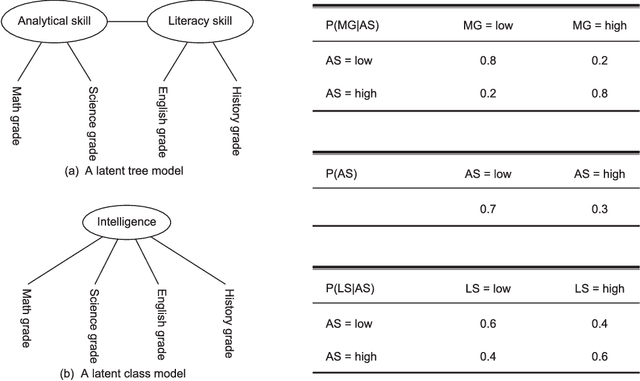
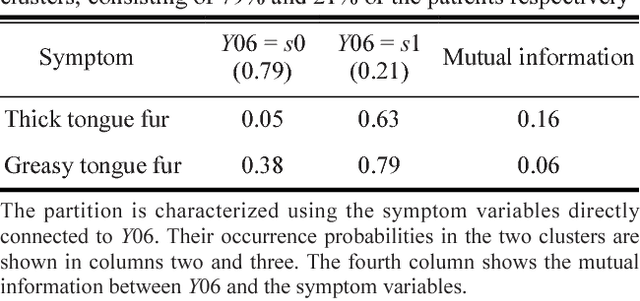

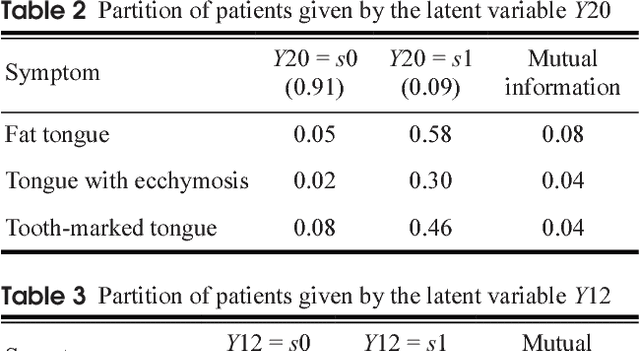
Abstract:Objective: The efficacy of traditional Chinese medicine (TCM) treatments for Western medicine (WM) diseases relies heavily on the proper classification of patients into TCM syndrome types. We develop a data-driven method for solving the classification problem, where syndrome types are identified and quantified based on patterns detected in unlabeled symptom survey data. Method: Latent class analysis (LCA) has been applied in WM research to solve a similar problem, i.e., to identify subtypes of a patient population in the absence of a gold standard. A widely known weakness of LCA is that it makes an unrealistically strong independence assumption. We relax the assumption by first detecting symptom co-occurrence patterns from survey data and use those patterns instead of the symptoms as features for LCA. Results: The result of the investigation is a six-step method: Data collection, symptom co-occurrence pattern discovery, pattern interpretation, syndrome identification, syndrome type identification, and syndrome type classification. A software package called Lantern is developed to support the application of the method. The method is illustrated using a data set on Vascular Mild Cognitive Impairment (VMCI). Conclusions: A data-driven method for TCM syndrome identification and classification is presented. The method can be used to answer the following questions about a Western medicine disease: What TCM syndrome types are there among the patients with the disease? What is the prevalence of each syndrome type? What are the statistical characteristics of each syndrome type in terms of occurrence of symptoms? How can we determine the syndrome type(s) of a patient?
Identification and classification of TCM syndrome types among patients with vascular mild cognitive impairment using latent tree analysis
Feb 24, 2016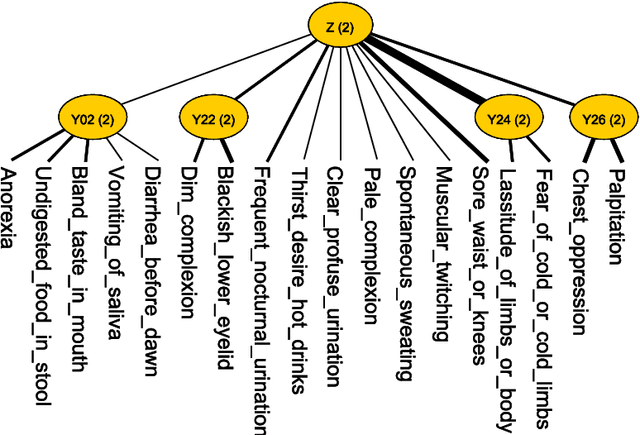
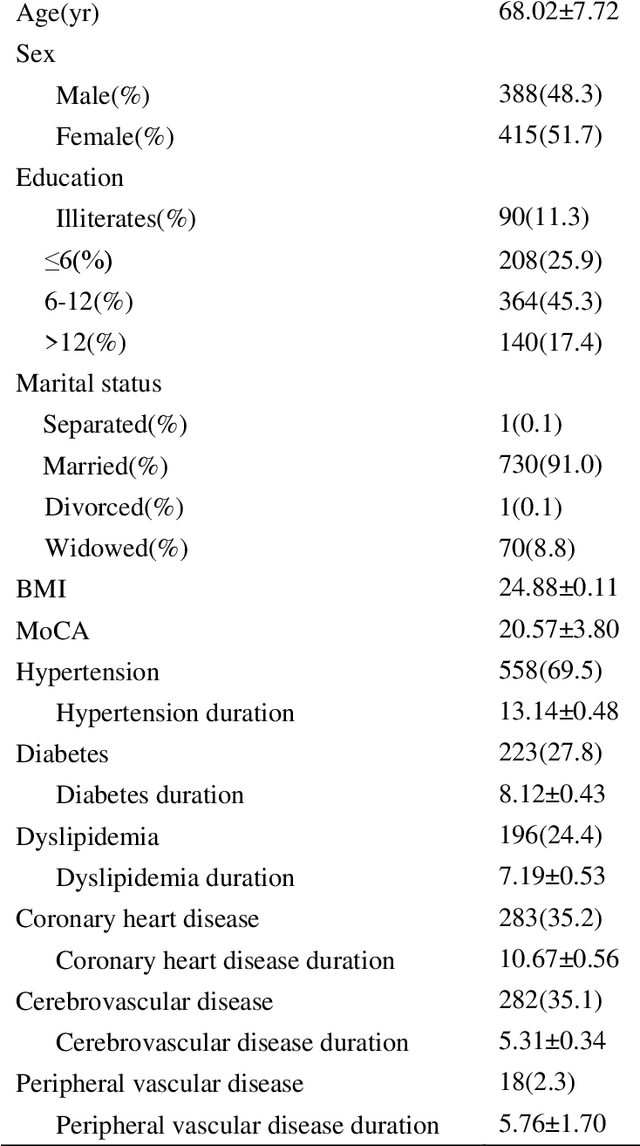
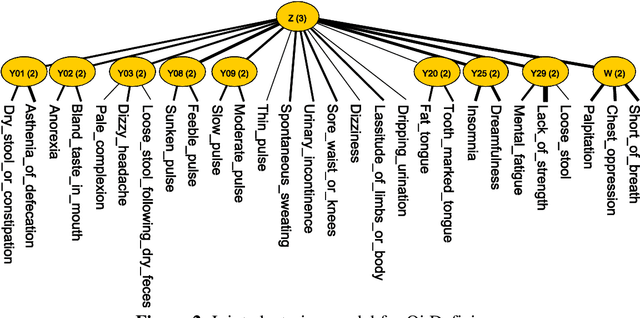
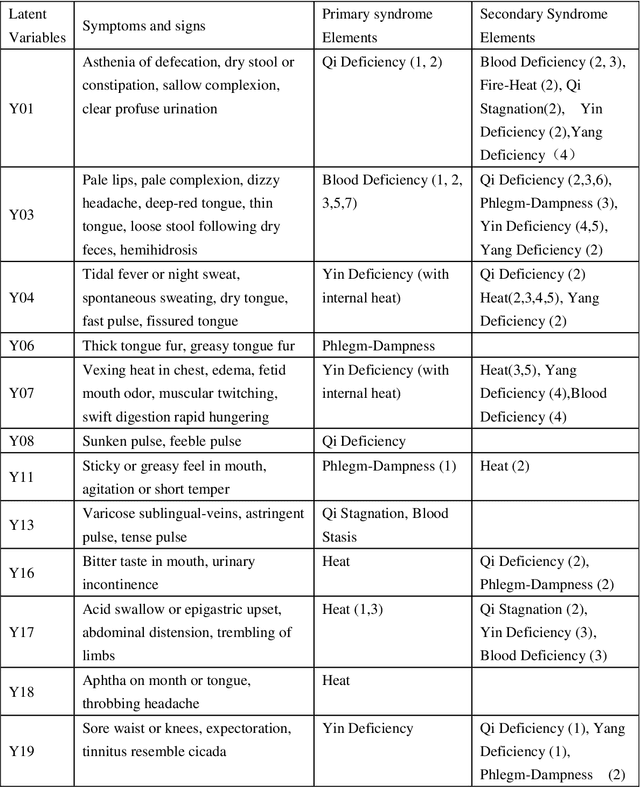
Abstract:Objective: To treat patients with vascular mild cognitive impairment (VMCI) using TCM, it is necessary to classify the patients into TCM syndrome types and to apply different treatments to different types. We investigate how to properly carry out the classification using a novel data-driven method known as latent tree analysis. Method: A cross-sectional survey on VMCI was carried out in several regions in northern China from 2008 to 2011, which resulted in a data set that involves 803 patients and 93 symptoms. Latent tree analysis was performed on the data to reveal symptom co-occurrence patterns, and the patients were partitioned into clusters in multiple ways based on the patterns. The patient clusters were matched up with syndrome types, and population statistics of the clusters are used to quantify the syndrome types and to establish classification rules. Results: Eight syndrome types are identified: Qi Deficiency, Qi Stagnation, Blood Deficiency, Blood Stasis, Phlegm-Dampness, Fire-Heat, Yang Deficiency, and Yin Deficiency. The prevalence and symptom occurrence characteristics of each syndrome type are determined. Quantitative classification rules are established for determining whether a patient belongs to each of the syndrome types. Conclusions: A solution for the TCM syndrome classification problem associated with VMCI is established based on the latent tree analysis of unlabeled symptom survey data. The results can be used as a reference in clinic practice to improve the quality of syndrome differentiation and to reduce diagnosis variances across physicians. They can also be used for patient selection in research projects aimed at finding biomarkers for the syndrome types and in randomized control trials aimed at determining the efficacy of TCM treatments of VMCI.
 Add to Chrome
Add to Chrome Add to Firefox
Add to Firefox Add to Edge
Add to Edge